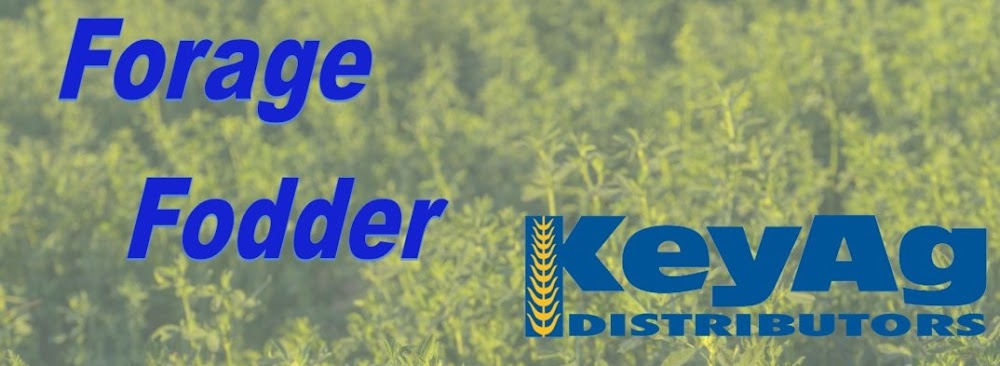Tuesday, August 31, 2021
State-By-State Hay Summary
Colorado—In the Aug. 19 report, compared to last week, trade activity light on good demand. Small squares of horse quality hay sold mostly steady. Few sales of large squares to cow-calf operations on firm prices. According to the U.S. Drought Monitor’s two week comparison of Colorado, very little change in drought classification was observed in the western half of the state, while DO and D1 classifications have started moving in to the northeastern counties to now include Morgan, Weld, Adams, and Arapahoe counties. Temperatures ranging 3 to 6 degrees above normal are contributing to this increase in drought conditions.
Missouri—In the Aug. 19 report, compared to last report, the supply of hay is moderate and demand is light to moderate and prices mostly steady. After an absolutely wonderful weekend of weather for the middle of August temperatures climbed back to more normal levels mid-week but not unbearable at all. Most of the state continues to be in very good shape but there are a few small areas that could use a bit of rain. Currently about eight and a half percent of the state is showing on the latest drought monitor. Producers should also be on the lookout for army worms. There have been reports of major outbreaks in neighboring states and although it is likely there has been some present for a few weeks now there are actual reports now of producers finding populations in the south west and south central areas of the state.
Nebraska—In the Aug. 19 report, compared to last week, alfalfa remained steady and grass hay sold steady to $5 higher in the central region. Ground and delivered hay steady. Dehydrated and sun-cured alfalfa pellets remain steady. Demand was good with active buyer interest for all bales of forage. Reports of dry conditions across the state and increased demand on hay.
Oklahoma—In the Aug. 19 report, compared to the last report, Aug. 6, hay trade remains slow to moderate for much of the state. Many areas across the state received heavy rainfall over the past two weeks, slowing some hay production and causing some issues in the field. High quality alfalfa trade remains slow on light supply, and late rains lowering quality. Many dairies continue to look for cheaper rations with low milk prices and increasing grain prices. Cattle prices continue to improve as corn prices level, but producers are holding off hay purchasing as rainfall continues helping pastures for most of the state.
Texas—In the Aug. 19 report, compared to the last report, hay prices are mostly steady. Trading activity and demand have slowed down due to pasture improvements from recent rainfalls. Producers in the South have finally got a break from the rains, which have them allowed them to get into the fields and begin harvesting. There is still a lot of off grade hay with some stripe in it is on the market due to excessive rains while producers were bailing in all regions. As a result, grinding quality or off grade hay has cheapened up due to excess supply. According to the Texas Crop and Weather report, producers in the north and central parts of Texas have started cutting hay to prevent losses to armyworms while others were spraying. In the west and central portions, producers are reporting problems with grasshoppers and army worms. Next report will be released Sept. 3.
New Mexico—In the Aug. 20 report, compared to last week, alfalfa prices steady. Beardless wheat steady on limited supplies. Trade moderate to active, demand moderate to good. In the southern and southwestern part of New Mexico the fifth cutting is underway. The eastern part of the state are in the fourth cutting. The northern part of the state are in the third cutting. Heavy rain in the southern part of the state had some alfalfa fields under water. Some hay being stored for the winter.
South Dakota—In the Aug. 20 report, compared to last week, all classes of hay remain firm. Very good demand remains for all classes and types of hay. Third cutting of alfalfa in full swing. Rain fell in western South Dakota late week with central and eastern parts of the state forecasted to see rain on Aug. 27 and beyond. Silage harvest has begun in the driest of areas already.
Wyoming—In the Aug. 19 report, compared to last week, all reported hay products sold steady. Demand was good with active buyer interest.
Montana—In the Aug. 20 report, compared to last week, hay sold fully steady. Demand for hay remains very good. Rain—that’s the story of the week. After months with no measurable rainfall in many locations, rain fell across a wide swath of the state. Many ranchers report from just under an inch to just over 2 inches over last three days. Ranchers say this rain should help soften grass and help promote regrowth, which will be very beneficial to cows still out on pasture and range. Producers continue to report waiting lists of people looking for hay, although hay sales this week were much slower with this rain system. According to the drought monitor 100% of the state is in moderate drought or worse. 98.7% of the state is in an severe drought or worse both unchanged since last week. 72.96% of the state is in extreme drought or worse, an increase of 4.61%. 13.81% of the state is in an exceptional drought an increase of 2.29% from last week.















































